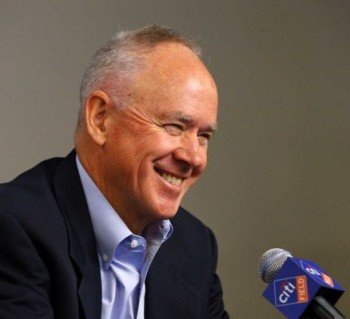
This past Saturday marked an anniversary of sorts for the New York Mets, as general manager Sandy Alderson was introduced and hired as the 12th general manager in team history on October 29, 2010.
Alderson signed a four-year deal at the time, with a club option for 2015, after working with Major League Baseball and then commissioner Bud Selig to help address the various corruptions in the Dominican Republic, such as identity and age fraud, use of performance enhancing drugs, and rogue sports agents.
Alderson had a large undertaking in front of him in spearheading the Mets from basement dwellers in the National League East to contention, as the Wilpon’s were reeling from the Bernie Madoff Ponzi scheme, and stadium attendance had been on the decline for several years.
Although it took several seasons for the Mets to regain relevance, Alderson’s initial MLB First-Year Player Draft in 2011 would turn out to be an essential draft for both last season’s improbable run to the World Series, and this year’s Wild Card Game.
Several key prospects from that draft would go on to help accelerate the Mets into postseason contention, while others were used as trade chips to bring in pieces that aided in their quest to bringing a championship to Queens.
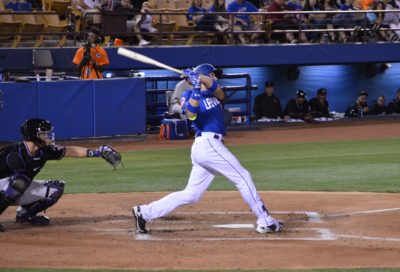
BRANDON NIMMO: 1st Round
The Mets selected Brandon Nimmo as their number one pick (13th overall) in the ’11 draft, the first position player drafted by the Mets since Ike Davis in 2008. Nimmo was a high school outfielder, who didn’t play high school baseball since Wyoming is one of three states that doesn’t have a baseball team.
Nimmo worked his way through the Mets’ system, having some underwhelming seasons before starting to put things together in 2014 with the St. Luice Mets in the Florida State League.
In 2016, Nimmo posted career highs in slugging (.541), OPS (.964), home runs (11), RBI (61), doubles (25), and batting average (.352), finishing second to teammate T.J. Rivera for the Pacific Coast League batting title.
Nimmo would finally get his opportunity in the majors on June 26, making his debut against the Atlanta Braves. Nimmo racked up the frequent flyer miles in 2016, as he would be optioned and recalled between Las Vegas and New York seven times.
Overall, Nimmo held his own in the majors, especially when it came to pinch-hitting, where in 12 at-bats his line was .500/.571/.500 and five runs scored. Nimmo had some good at-bats in September, and was utilized late in games for pinch-hitting and defensive replacement.
The Mets have options with Nimmo in 2017, as they could utilize him as a fourth outfielder or have him begin the year in Las Vegas where he’d get the most playing time. In any case, Nimmo has some upside in his game, as he does a good job spraying the ball to all fields, working the count, and getting on base. His energy and infectious smile and love for the game made him a fan favorite in ’16, and he should get one of the first call ups to Queens next year if the Mets need reinforcements.
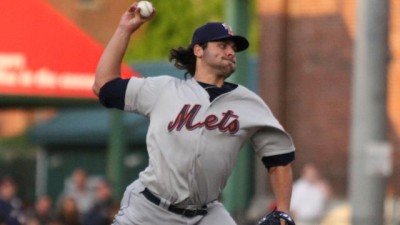
(Photo by Josh Jackson/MiLB.com)
MICHAEL FULMER: CA
Michael Fulmer played a huge part for the Mets success in the second half of 2015 and beyond, without playing a major league game for the Amazins. Fulmer, 23, was the centerpiece prospect along with RHP Luis Cessa in the blockbuster trade that sent Yoenis Cespedes to the Mets from Detroit.
The sizable Fulmer was drafted 44th overall as a compensation pick for losing LHP Pedro Feliciano to the Yankees the year before, and was having a stellar year for Binghamton prior to the July 31 trade with the Tigers, going 6-2 with a 1.88 ERA in 15 starts.
Fulmer followed his success in Double A with a potential Rookie of the Year season for the Tigers in 2016, going 11-7 with a 3.06 ERA and 1.12 WHIP. Fulmer was second in rookie wins behind Kenta Maeda (16), and third in fWAR (3.0), behind Jon Gray and Maeda.
“La Potencia” played the role of team MVP in the second half for the Mets, slashing .287/.337/.604, with 17 home runs, 44 RBI, and 39 runs scored in 57 games played. Cespedes had a strong Division Series against the Los Angeles Dodgers, belting two homers with 4 RBI. Cespedes had his all-around best performance during Game 3 of the NLDS, going 3-for-5 with a homer and 3 RBI, in the Mets 13-7 romp over the Dodgers.
The rest of Cespedes’ postseason didn’t go as planned, as he struggled both at the plate and defensively, and had an ailing left shoulder in which he needed to lifted from Game 4 of the NLCS against the Chicago Cubs in the second inning.
The Mets were fortunate that the free agent market didn’t take off for Cespedes as he had hoped in the 2015-16 offseason, as Alderson was able to sign the right-handed power hitter to a three-year deal for $75 million, which included an opt-out after the first year. Cespedes is expected to opt out of his current contract, in hopes of obtaining a four or five year deal for over $100 million.
After another successful year in which Cespedes slashed .280/.354/.530 with 31 homers (his first back-to-back 30 homer seasons), and 86 RBI, losing that type of production would be a set-back for the Mets going forward, and are expected to try and hammer out an extension for the 31-year-old slugger once he opts out after the World Series.
While Fulmer slid in to the Tigers rotation this year, adding to the Mets plethora of talented pitching prospects to have gone through their system, Cespedes was the power threat the Mets had missed since the days of Carlos Beltran and Carlos Delgado, and was a main reason the Mets made the surge they did in the second half of 2015.
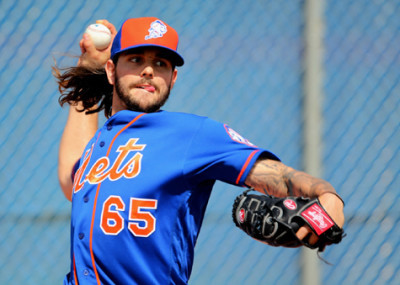
(MMN/Jacob Resnick
ROBERT GSELLMAN: 13th Round
The Mets selected Robert Gsellman with the 402nd overall pick in 2011′s draft, and were encouraged by his athleticism, as he was a two-sport athlete in high school playing both baseball and basketball.
The six-foot-four right-hander had good success in the minors, registering back-to-back-to-back seasons in 2013-15 of a sub 3.00 ERA. When Steven Matz landed on the disabled list with shoulder tightness, Gsellman, 23, was called up to originally take a spot in the bullpen, while Jon Niese was slated to start.
Niese would tear his meniscus in the first inning of his August 23 start in St. Louis, requiring knee surgery. With Gsellman in the bullpen and ready to go in case of a short start by Niese, he stepped in and pitched 3.2 innings of two hit ball, walking three and striking out two, earning his first major league win.
Gsellman kept the Mets in the wild card hunt that night, just 3.5 games behind the Cardinals. In total, Gsellman pitched eight games, making seven starts, with a record of 4-2 with a 2.42 ERA, the 7th lowest ERA among all rookie pitchers.
Gsellman pitched in plenty of meaningful games in September, including his September 30 start against the Philadelphia Phillies where he went six innings of one run ball, walking one and striking out seven. The win ensured the Mets would at least qualify for a tiebreaker after the regular season, and moved the team within one win or one Cardinals loss of clinching a wild card berth.
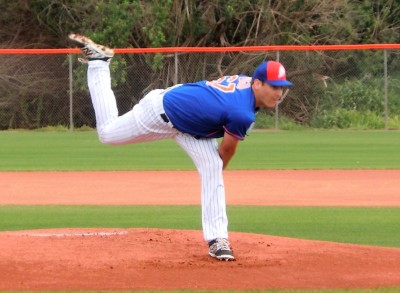
(Photo by Ed Delany)
SETH LUGO: 34th Round
Seth Lugo was added to the Mets’ 40-man roster last offseason, a move the Mets and their staff should be happy they made. Lugo, 26, provided the Mets another capable starting pitcher in a year where Matt Harvey, Steven Matz, Jacob deGrom, and Zack Wheeler were all dealing with injuries and surgeries.
Lugo was called up on June 30 in place of LHP Sean Gilmartin. Lugo had worked tirelessly in the minors to reach his ultimate goal of making the major leagues, including working as a starter and out of the pen, and dealing with Spondylolisthesis in 2012, which occurs after a displacement of a vertebra in the spine. Lugo would miss the entire ’12 season, undergoing a lumbar fusion and a surgery that lasted almost 10 hours, and kept him bedridden for three months.
Lugo worked his way back from surgery, and started to increase his workload as he advanced in the minors. Once Lugo finally made it to Queens, he made the most of his opportunity, appearing in 17 games, making eight starts. He went 5-2 with a 2.67 ERA in 64 innings, holding hitters to a .220 average. His splits were also impressive, as he was equally sharp against lefties as he was righties, posting a 2.89 ERA and .196 average against left-handed hitters and a 2.50 ERA and .240 average against righties.
Lugo had a four-game winning streak stretching from August 25 to September 11, tossing 25 innings and giving up five earned runs, striking out 18 while walking only five.
With the emergence of Lugo and Gsellman in ’16, the Mets enter next season with a several options in their starting rotation. The Mets are anticipating full recoveries from their walking wounded of 2016, however, as we are all aware, teams can NEVER have too much starting pitching depth, and in getting to witness several high intensity starts from both Lugo and Gsellman, fans should feel optimistic that the Mets starting rotation will once again be their strength.
Who would’ve thought that so many prospects from Alderson’s first draft would have key roles in helping the Mets reach the postseason for back-to-back years for only the second time in franchise history. Patience pays off when dealing with minor leaguers, and has paid off both in talent and the level of talent they’ve acquired in the various trades they’ve made the past two seasons. Patience is also hard to sell to fans, however, the Mets are poised to staying in contention for the foreseeable future, due in part to some of Alderson’s draft choices of previous years.
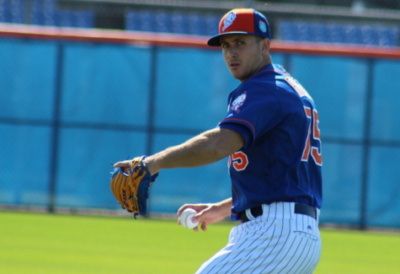
Honorable Mentions:
Logan Verrett: 3rd Round (1-1 3.03 ERA 0.88 WHIP in 2015, 3-8 5.20 ERA 1.56 WHIP in 2016)
John Gant: 21st Round (Used as trade chip along with Rob Whalen for Juan Uribe and Kelly Johnson in 2015).
T.J. Rivera: He’s only listed in honorable mention because he went undrafted in 2011 but was then signed by the Mets. Rivera was excellent in his first taste of the majors hitting .333/.345/.476 in 33 games for the Mets this season.
Also important to note the key roles that Paul DePodesta, Vice President of Player Development and Scouting, and Chad MacDonald, Scouting Director, played in drafting these players. As well as the amateur scouting staff that travels to watch the players.

